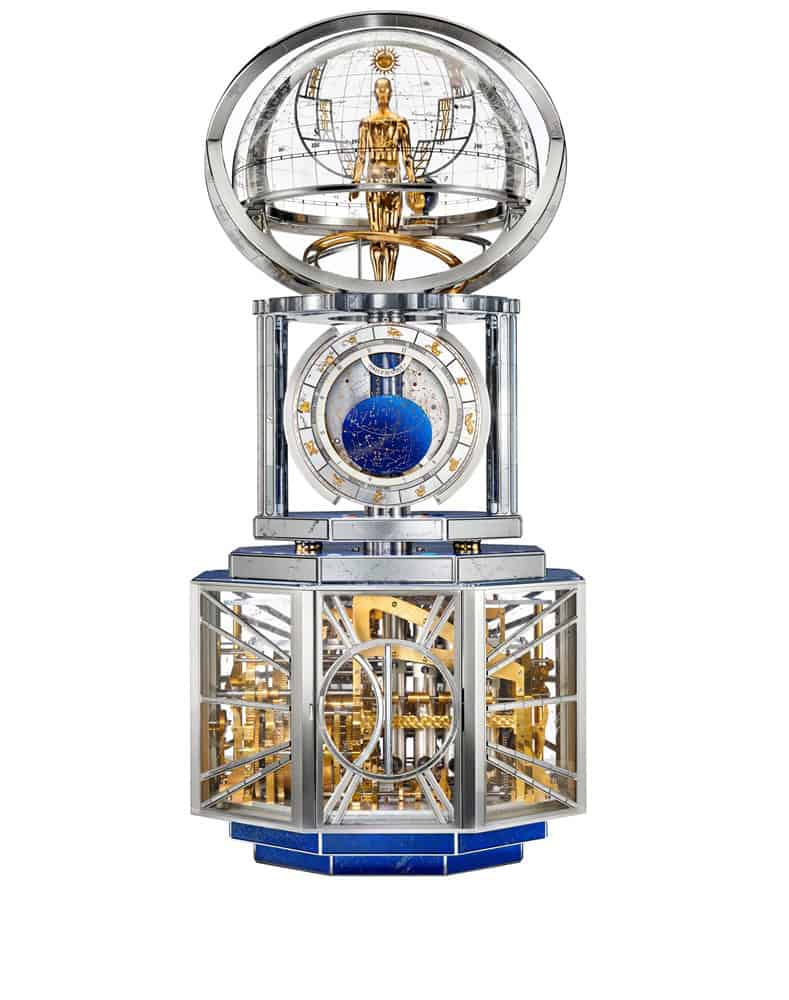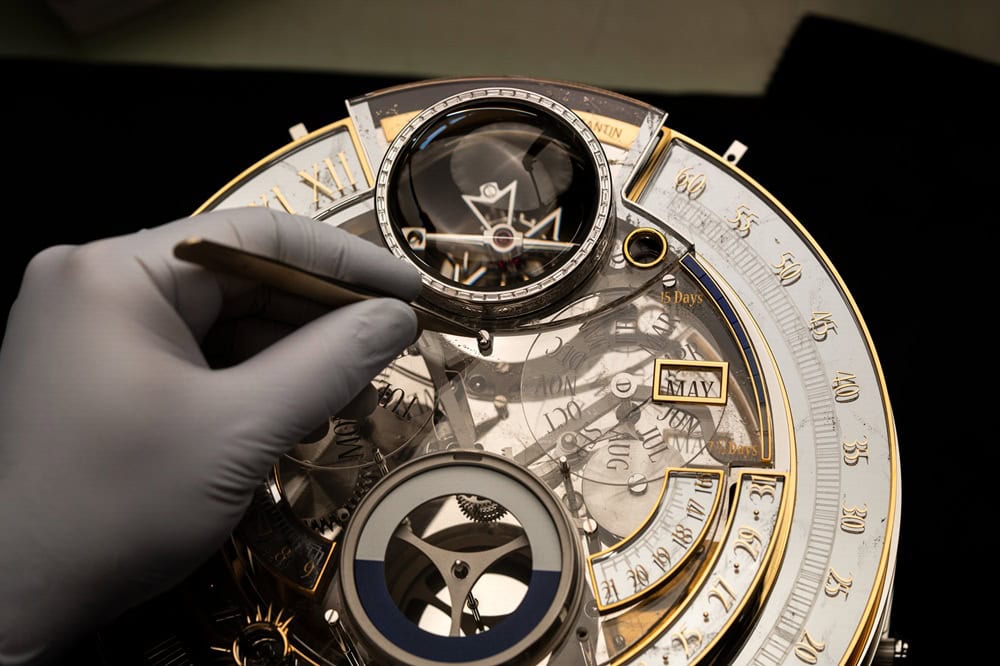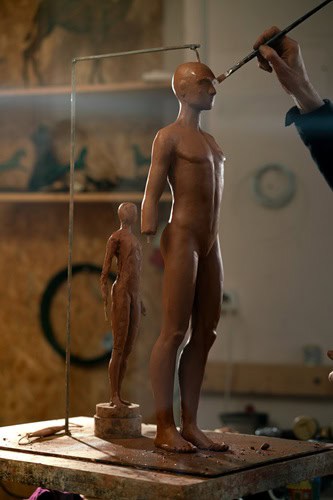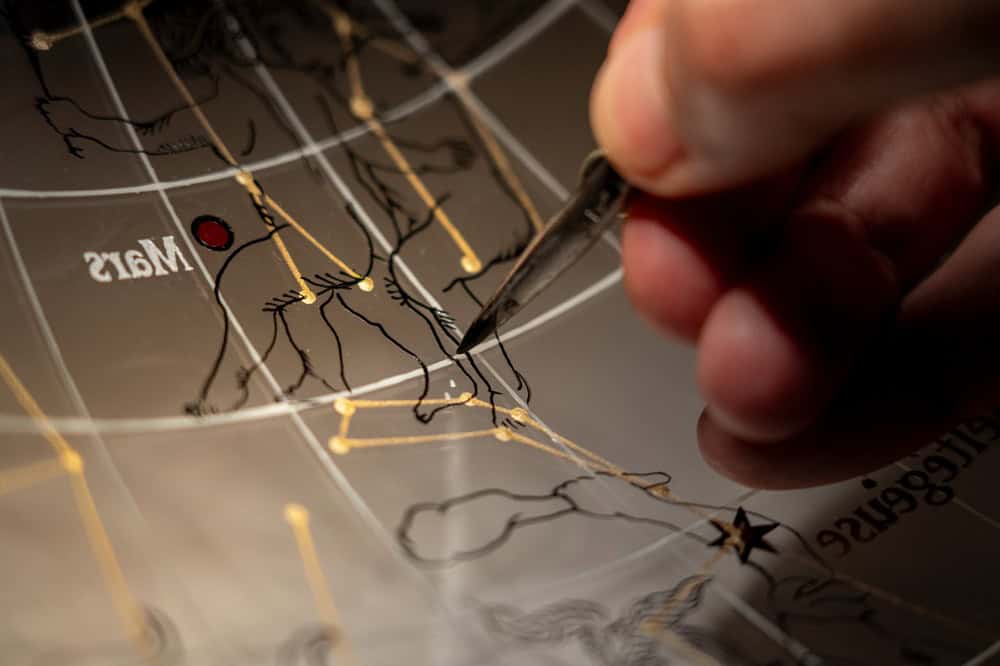Vacheron Constantin marks its 270th anniversary with a tribute to the Maison’s legacy: La Quête du Temps. An astronomical clock that combines a timekeeping instrument, the traditions of Haute Horlogerie, artistic craftsmanship and the kinetics of an automaton, this masterpiece is an unprecedented expression of human ingenuity, passion and creativity.

It has also inspired the new Métiers d’Art Tribute to The Quest of Time wristwatch, a double-sided timepiece pushing the boundaries of technicity and artistry: four patent applications and a new manual manufacture movement, Calibre 3670, feature astronomical complications, double retrograde displays and two display modes.
“Is it always possible to do better? Is it always possible to be amazed? Undeniably, At Vacheron Constantin, the pride and emotion we feel with each new project comes from the freedom and passion to create, which is fuelled by the quest for excellence and innovation. The result of seven years of work, this unparalleled collaborative project has given life to a marvellous object, a mécanique d’art that brings together mankind and the universe, in an unprecedented cultural and artistic statement. It also inspired, as is always the case at Vacheron Constantin, a Métiers d’Art wristwatch like no other.”
Laurent Perves, CEO, Vacheron Constantin

The automaton takes the form of a humanistic Astronomer, whose choreography not only indicates the time but also invites viewers to contemplate the beauty and mysteries of the cosmos and the astronomical phenomena that lie at the foundation of mankind’s ability to measure time.
Since the dawn of the ages, mankind has been fascinated by the sky, observing the Moon, the Sun, the stars and their movements across the celestial vault. Through these observations, daily life was governed by the rhythm of sunrise and sunset, the Moon’s phases and the seasons, which thus came to define time. Eventually, horology made it possible to transpose these cycles into clocks, marking time through mechanical ingenuity. The observation of the cosmos and a deep curiosity about astronomical phenomena have been central to Vacheron Constantin’s approach to watchmaking since it was founded in 1755. Thus, the ‘Astronomer’ automaton serves as a metaphor for the spirit of the Maison, its choreography an analogy for the flow of time.

In both form and content, La Quête du Temps links back to the history of merveilles (marvels) and follies – creations that, beyond their practical purpose, were intended to captivate, intrigue and inspire a sense of awe. During the 18th century, interest in science – known as ‘natural philosophy’ – grew rapidly, and demonstrations of the new technical marvels became a form of public entertainment. Merveilles were the most complex of these devices, encapsulating technical and scientific advances while expressing the pinnacle of artistry and beauty, and the craze for collecting them reached its apotheosis in Europe during Age of Enlightenment – the period that also gave birth to Vacheron Constantin.

The creation of La Quête du Temps united masters of many different disciplines in a mission to go beyond all that each had individually achieved in their own field. Vacheron Constantin has always been open to new ideas and a collaborative method of working, echoing the tradition of établissage, a common practice in watchmaking in the past where specialised workers each contributed in their own field to a shared project; in the 18th and 19th centuries, specialist workshops in Geneva were collectively known as La Fabrique.
For La Quête du Temps several teams within the Maison pooled their savoir-faire to design both the technical and aesthetic aspects of the timepiece and develop its horological complications; the Manufacture has conceived the automaton with François Junod, recognised as the world’s greatest automatier, and has produced the clock mechanism and its casing in collaboration with L’Épée 1839; ; astronomers from the Geneva Observatory have enriched and affirmed the celestial narrative; and master artisans devoted their skills to the artistic decoration of the masterpiece.
For more information please visit Vacheron Constantin


